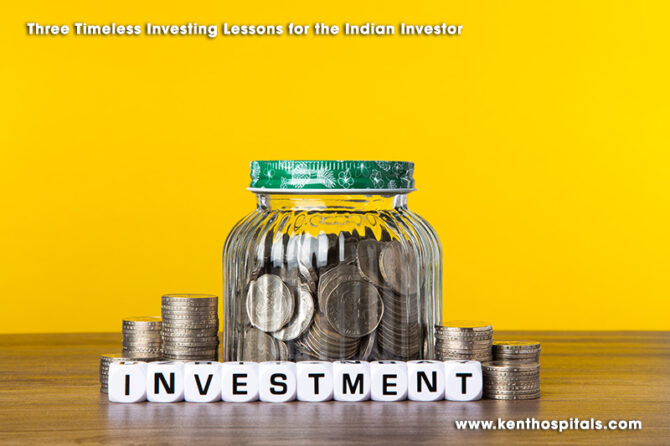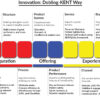
Investing can be intimidating, at least when markets are behaving unpredictably or headlines are causing more pandemonium than illumination. Creating wealth, though, is simply a matter of discipline, patience, and an understanding of a handful of universal principles. As The Economic Times often reminds us, superior investors don’t follow trends—they invest with the fundamentals over the long term. When you contemplate the following three imposing teachings, you can view your money and your financial tomorrow through different eyes.
1. What Really Makes a Good Investment?
Novice investors are typically lured by the prospect of “the next big tip.” Somebody leans over and informs you of a stock that doubled over a night, a broker promises an upcoming initial public offering, or Twitter declares that a penny stock is “the next Infosys.” But reality comes down to earth: a good investment is one that rises steadily with the economy.
In India, the Nifty and Sensex are not just screen numbers. They represent the best Indian companies driving Indian growth—they are world leaders in the field of IT, banking, energy, pharma and FMCG sectors. When the GDP of India rises, their revenue and profits also rise. When they expand, your fortune does too.
Take the Infosys of the 1990s, or HDFC Bank of the early 2000s. Decadal holders of such stocks reaped exponential growth—not speculative, but because such companies were benefiting from India’s structural economic upswing.
Warren Buffett once said, “The stock market is designed to transfer money from the Active to the Patient.”
And patience within India’s paradigm, boosted by the nation’s growth story, has always yielded rich dividends for investors.
Error to Shun: Never chase a red-hot tip or a short-term bubble. You must ask yourself: Does the company growth mirror India’s economic growth? If it does, it’s more likely a sound investment.
Takeaway: A good investment is not the one that makes you instantly rich. It’s the one that increases slowly with the Indian economy and reflects it within the index.
2. Inexpensive or High-Priced? Utilize the Use of the Market
All investors ask the same question: Are stocks too expensive these days? Media headlines bellow record highs, but record highs aren’t synonymous with “overvalued.” The issue is comparing market valuations to the real economy.
A very basic and effective yardstick is the Market Capitalization-to-GDP ratio, also known internationally as the Buffett Indicator.
Market Capitalization ≒ GDP → Fair Value
Market Capitalization > GDP → expensive Market cap < GDP → Undervalued
Specifically, India’s market cap to GDP ratio was around 95% in 2023 compared with nearly 150% in the United States. That indicated Indian markets had thawed but were just not as bubblish as America’s. In 2008, just before the global financial crisis, India’s ratio surpassed 150%, a form of overvaluation. Investors who ignored the signal were the losers.
Rakesh Jhunjhunwala, the great Indian investor, had the following saying: “Markets are like a weighing machine in the long run. You can’t fool them.”
This ratio eliminates market noise and enables you to remain objective when the crowd is driven by fear or greed.
Practical Advice: Before you make large investments, verify where India’s Market Cap-to-GDP ratio is. If it is rising way up higher than 100–120%, be cautious. Anything below, it’s the entry point for the long-term investors.
Takeaway: Figures don’t lie. Employ the Market Cap-to-GDP ratio as a way of filtering the market whipsaws and concentrating on proper valuations.
3. The Inflation Reality Check
Inflation is the silent thief of affluence. It erodes spending power silently enough that little notice is taken of it until it is too late.
With an inflation of only 6% annually, your ₹50,000 monthly expenditure today will balloon up to nearly ₹1.6 lakh over a period of 20 years. That is, your comfortable living standard today will be too expensive tomorrow unless your cash grows more than the inflation speed.
That trap: Savings accounts and fixed deposits (FDs) sound “safe,” but interest rates barely beat inflation. At 6% interest on an FD and 6% inflation, you’re walking on a treadmill—you’re working hard and sweating, but going nowhere fast. Actually, you’re losing money in real terms after you’ve paid your taxes.
Stocks, however, consistently registered inflation-beating performance. The Sensex since its inception in 1979 compounded over 15% annually, registering much higher earnings than the average inflation. That’s the reason and only reason investors with a long-term perspective, although experiencing short-term volatility, are richer in real dollars.
As Benjamin Franklin famously said, “Beware of little expenses. A small leak will sink a great ship.” That small leak is inflation—ignore it at your own risk.
Illustration: If you invested ₹10 lakh via FDs in the year 2000, it would’ve gone up to around ₹32 lakh by the year 2020. Sounds good—with the awareness that your purchasing power lags behind. The same amount invested via the Sensex would’ve gone over ₹1.5 crore. That’s the difference between living with inflation and outselling it.
Takeaway: The biggest latent risk isn’t volatility, it’s the illusory comfort of low-growth investments. To preserve your wealth, you must beat inflation, and equities are the tried-and-tested vehicle.
Final Word: The India Opportunity
India is the world’s fastest-growing large economy and its markets are becoming increasingly deeper, broader, and more globalized. Each SIP into an index fund, each patient investment into blue-chip shares, and each systematic asset allocation consistent with these teachings is more than a punt on your financial future—it’s a punt on the future of India.
The Economic Times consistently emphasizes the point that disciplined, long-term investment is the bridge from today’s income to tomorrow’s wealth.
So, remember these three lessons:
A good investment goes up with the economy, not hype.
Valuations matter—let the Market Cap-to-GDP ratio be your guiding light.
Inflation is the real enemy—stocks help you fight it.
As the old Indian saying goes: “The best time to plant a tree was 20 years ago. The second best time is today.” The same also goes for investing.
Leave a reply

















Dear Dr. Prahlada N.B Sir,
Your blog post on "Three Timeless Investing Lessons for the Indian Investor" is truly enlightening! The way you've broken down complex investing concepts into easily digestible insights is commendable. Your emphasis on patience, understanding market valuations, and beating inflation is particularly noteworthy.
*Key Takeaways:*
– *Investing with the economy*: Focusing on solid investments that grow with India's economic growth.
– *Market Cap-to-GDP ratio*: A valuable tool for assessing market valuations.
– *Inflation's impact*: Highlighting the importance of investments that outpace inflation.
Your writing style is engaging, and the examples you provided make the concepts more relatable. It's clear that you're passionate about empowering investors with knowledge.
Thank you for sharing your expertise, sir. Your blog post is a valuable resource for investors seeking to make informed decisions.
Reply